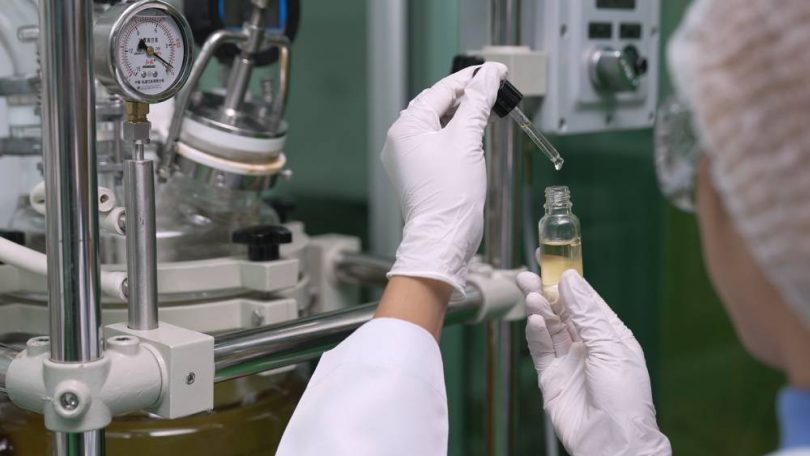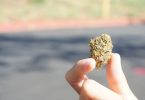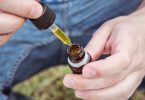Cannabidiol (CBD) is often converted into other minor cannabinoids which can be present in the plant in trace amounts, but known and requested in high demand in the market.
An example of these cannabinoids is Delta-8-tetrahydrocannabinol (THC).
The acidic conversion of CBD into psychoactive cannabinoids is studied since 1940 [1] and the process was patented in 2008. [2] It involves mixing Lewis acid in an organic solvent, adding CBD to the reaction mixture and refluxing under hydrogen athmosphere. The mixture is then diluted with an organic solvent and then cold water is added in order for the mixture to split into an aqueous and an organic phase: the latter is the one containing THC-8.. Finally, the organic phase needs to be removed, and then Delta-8-THC is eluted from it. [3]
While this process is generally considered simple, at least by scientific standards, it can pose risks, especially to non-professional people. The acid used during the reaction can be concentrated, caustic and seriously poisonous. It can also evaporate in the air and become an invisible threat. It is always recommended to perform this kind of procedures under a fume hood in order to avoid the inhalation of harmful volatiles. Negligence during the purification phase can increase the chance of dangerous byproducts and residues in the final product.
Another increasingly popular conversion product of CBD is THC acetate ester (THC-O Acetate). This synthetic cannabinoid is not naturally present in cannabis plant and pose many concerns regarding its safety and health impact. Once CBD has been converted into THC-8, this can be treated with acetic anhydride (Ac2O) in order to create this synthetic derivative.
Hexahydrocannabinol (HHC) is another unusual cannabinoid that has been making a name for itself. This is an hydrogenated derivative of tetrahydrocannabinol is rarely present in trace amount in plants and was first synthesized by R. Adams in 1944 treating THC-8 or THC-9 with hydrogen in the presence of a metal catalyst like palladium (Pd). [4]
References:
[1] Adams R., et al. Structure of cannabidiol. VI. Isomerization of cannabidiol to tetrahydrocannabinol, a physiologically active product. Conversion of cannabidiol to cannabinol. J. Am. Chem. Soc. 1940;62:2402–2405. [Journal Impact Factor = 16.383] [Times Cited = 71]
[2] https://patents.google.com/patent/US7399872B2/en
[3] Watanabe et al. Conversion of cannabidiol to Δ9-tetrahydrocannabinol and related cannabinoids in artificial gastric juice, and their pharmacological effects in mice, Forensic Toxicology (2007); vol 25, pag16–21 [Journal Impact Factor = 4.096] [Times Cited = 53]
[4] https://patents.google.com/patent/US2419937A/en
Image: https://www.bigstockphoto.com/it/image-458612361/stock-photo-scientist-test-cbd-hemp-oil-product-in-curative-cbd-lab-the-hemp-oil-contain-natural-cbd-extractio









